What is it?
Ectropion (outward turning) occurs when the eyelid margin does not adhere to the eye surface. A consequence of the condition is a chronic, pharmacologically untreatable inflammation of the conjunctiva and eye surface, and flowing of tears over the eyelid edge. Prolonged ectropion may even lead to corneal degeneration.
Possible causes of ectropion include:
- aging of eye tissues (involution changes) – the most common cause resulting from age-related stretching of so called eyelid ligaments, skin flaccidity, tarsal plates, and reduced tension of the orbicular muscle;
- facial nerve palsy;
- eyelid scarring post injuries, burning or other surgical procedures.
It also happens that ectropion is congenital.
The treatment method depends on the degree of ectropion and the condition of eyelid ligaments (their flaccidity). Based on the analysis of the above factors, the patient is qualified for the procedure and a decision about the corrective method is made. If only the medial part of the eyelid is turned outward together with the lacrimal point, which results in excessive lacrimation, surgery of the middle portion of the eyelid (i.e. excision of a rhomboid conjunctival flap) or so called lazy-T procedure is conducted. In the case of high flaccidity of the ligaments and turning of the whole eyelid, a procedure of lateral tarsal slip (canthal sling) is performed. It involves dissection of a tarsal fragment and suturing it to the periosteal margin of the orbit at an appropriate location. The surgery may also be performed with the use of Kuhnt and Szymanowski method, by means of tarsal shortening and plastic eyelid surgery resulting in removal of excessive skin and decreasing its flaccidity. After the procedure, a dressing and ointments with antibiotic are applied. Skin sutures are removed after 7-10 days, and absorbable sutures are left for spontaneous absorption.
FAQ
The condition for eyelid plastic surgery is withdrawal of anticoagulant drugs. Before the procedure, the patient should consult an internal medicine specialist in order to obtain a certificate on the state of health and modification of treatment, or consent to withdrawal of anticoagulant drugs for at least 10 days before the procedure. On the day of the procedure, the patient should not have any meals one hour before the procedure. After arrival at the Centre, the patient should go to the reception and present the identity document together with a certificate from an internal medicine specialist about the state of health.
Eyelid plastic surgeries are performed at OCHO under local anaesthesia as one-day procedure. The patient stays at the Centre in relation to the procedure for up to 3 hours. After he/she receives a hospital discharge summary, the patient may leave the hospital.
After the plastic surgery, dressings are applied on the eyelids, so you should not drive a car.

